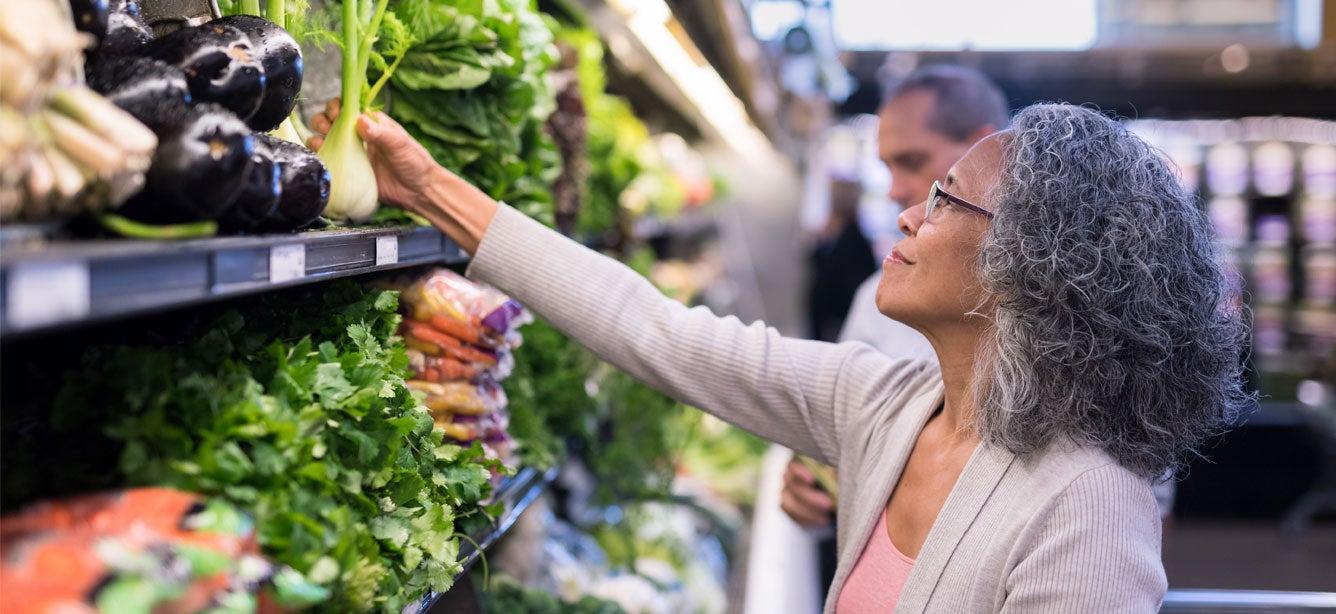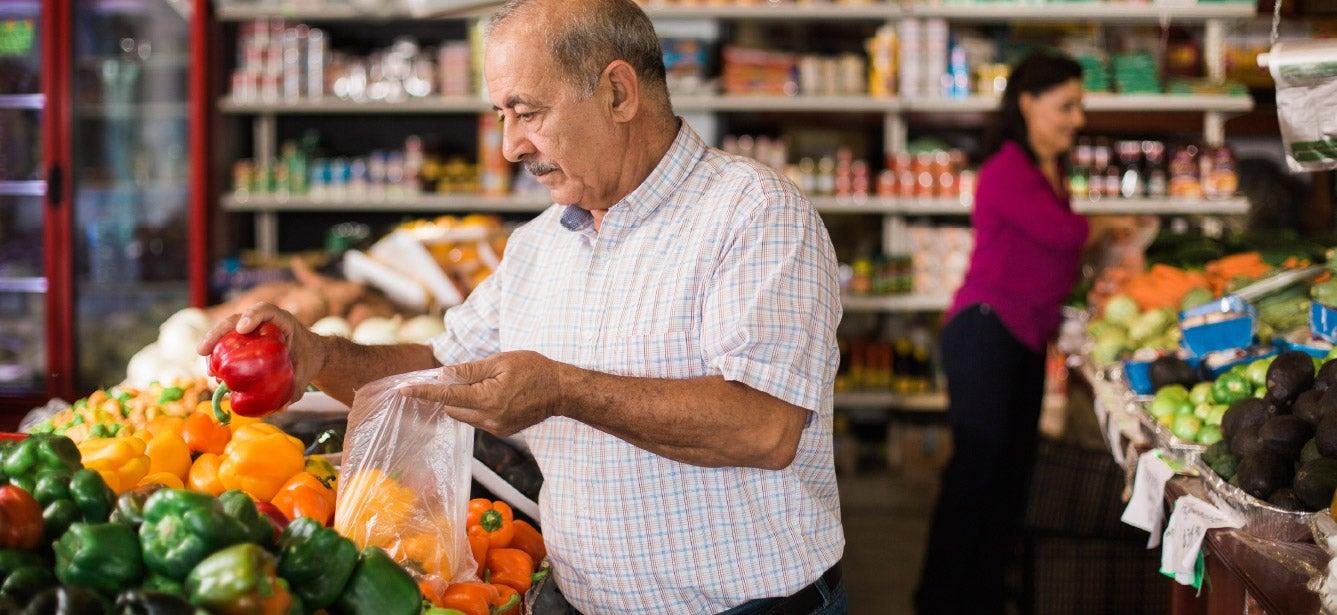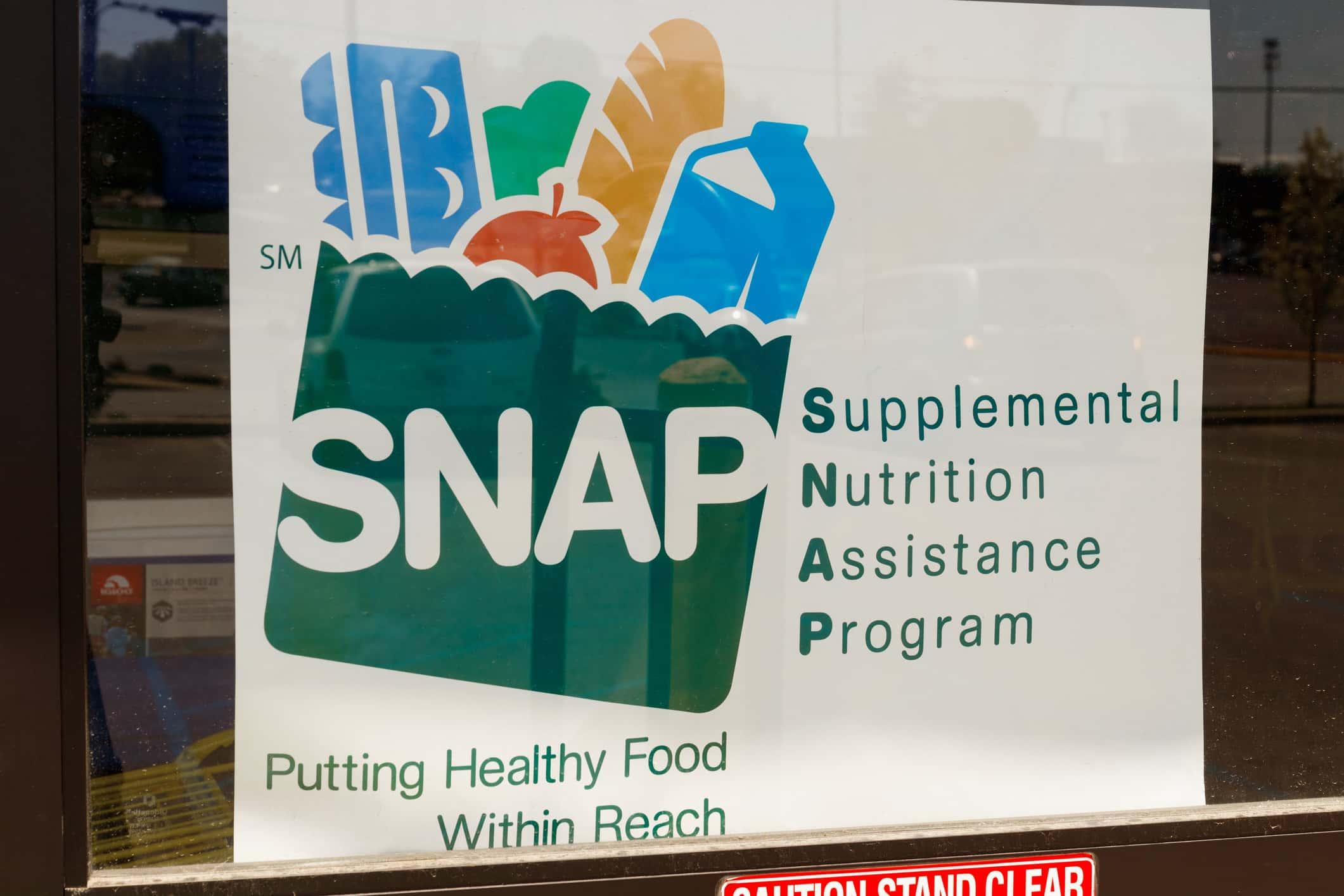SNAP and Healthy Aging: Benefits That help Older Adults Eat Well
3 min read

Related Topics
Each of us needs to eat well to age well. That includes getting enough healthy fruits, vegetables, and protein in our diets. But this isn’t always easy—especially when food prices rise and incomes stay the same.
With the government shutdow possibly delaying SNAP and other federal benefits, local programs and resources are offering assistance nationwide. Explore food support programs that can help you right now.
Charles, 74, knows this all too well. After his landlord raised the rent by a lot, Charles no longer could afford to buy groceries with the money he gets from Social Security.
It shouldn’t be this way. Yet in 2023, roughtly 7.4 million older adults (age 60+) like Charles experienced food insecurity.1 That means they don’t have consistent access to the nutritious food that supports an active, healthy life.
Without enough food, our health and well-being suffer. Food insecure older adults, especially, face a wide array of negative health outcomes. These can include:
- More chronic conditions: It’s hard to get enough nutrients when you’re food insecure, and poor nutrition makes it more likely that you will develop one or more chronic conditions. At the same time, financial stress can make those conditions more challenging to manage. This means many seniors make trade-offs (such as choosing between food or medicine) that worsen their disease.
- Longer recovery time: Proper healing after surgery, injury, or illness depends on good nutrition. Without access to enough food for a balanced diet, it’s much harder to get better. Healing takes longer and may not fully happen.
- Greater risk of falling: Good strength and balance depend on healthy muscles and bones—both of which can protect against falls. Not having enough to eat can lead to decreased muscle mass and bone density. This increases the chances for falls that can negatively impact health and independence.
That’s why aging well means having equal access to nutritious food, regardless of income. When we can afford a healthy diet, we can maintain our strength and ability to take care of ourselves; stay in our homes; and keep up with the normal activities of daily living.
SNAP: A vital program to improving health
This is where the Supplemental Nutrition Assistance Program (SNAP) comes in. As the largest domestic anti-hunger program in America, SNAP is one of the most effective ways to reduce food insecurity and improve health outcomes among people with limited incomes.
Charles knows this on a very personal level. After visiting AgeSmart—one of NCOA’s Benefits Enrollment Center partners in Illinois—Charles learned that he and his spouse might be eligible for vital food assistance. And they were! Today, they receive $300 in SNAP benefits every month. “We don’t have to worry about how to purchase food any longer,” he recently explained through tears.
According to the most recent data, 7.8 million SNAP participants are adults age 60 and older.2 On average, they receive $188 per month to help pay for groceries,3 which contributes to a 30% reduction in food insecurity prevalence overall.4
Because SNAP frees up financial resources, people enrolled in the program have more money to spend on medical care. And their health outcomes improve as a result. Research shows that older adults who participate in SNAP:
- Are less likely to skip medications or put off refilling their prescriptions
- Are less likely to enter a nursing home or become hospitalized
- Are more likely to direct money toward health-promoting activities and preventive medical care
And, among SNAP participants who do become hospitalized, their stays are shorter and less expensive.5
There’s more good news. NCOA asked the University of Massachusetts at Boston to analyze the Health and Retirement Study, and the results found that people age 60 and over who are enrolled in SNAP are more likely to access health services—such as visiting their physician, going to the hospital, or receiving home health care—than their peers who are not enrolled in the program. In total, 88% of the SNAP participants identified in the analysis accessed at least one of these services in the last two years.
"This means it’s entirely possible that SNAP helps older adults feel more comfortable about seeking care—because they know they have more money in their budgets to afford it," said Jessica Johnston, Senior Director, Center for Economic Well-Being at NCOA.
Closing the participation gap
Despite the many benefits that come with reduced food insecurity and improved health outcomes, millions of older adults who qualify for SNAP are not enrolled in the program. It is estimated that over half of eligible people 60+ are not benefitting from this vital monthly food assistance.
NCOA’s Senior SNAP Initiative focuses on increasing program enrollment so more older adults with limited incomes can buy the food they need for good health. Could you or someone you know be one of them? Visit BenefitsCheckUp.org for eligibility guidelines in your state and to learn how to apply.
Sources
1. Feeding America. Map the Meal Gap 2025. May 2025. Found on the internet at https://www.feedingamerica.org/sites/default/files/2025-05/Map%20the%20Meal%20Gap%202025%20Report.pdf
2. USDA Economic Research Service, U.S. Department of Agriculture. Supplemental Nutrition Assistance Program (SNAP) - Key Statistics and Research. Updated July 24, 2025. Found on the internet at https://www.ers.usda.gov/topics/food-nutrition-assistance/supplemental-nutrition-assistance-program-snap/key-statistics-and-research
3. Center on Budget and Policy Priorities. A Quick Guide to SNAP Eligibility and Benefits. Updated October 3, 2025. Found on the internet at https://www.cbpp.org/research/food-assistance/a-quick-guide-to-snap-eligibility-and-benefits
4. Center on Budget and Policy Priorities. SNAP is Linked with Improved Health Outcomes and Lower Health Care Costs. Dec. 14, 2022. Found on the internet at https://www.cbpp.org/research/food-assistance/snap-is-linked-with-improved-health-outcomes-and-lower-health-care-costs
5. Laura J. Samuel et al. Does the Supplemental Nutrition Assistance Program Affect Hospital Utilization Among Older Adults? The Case of Maryland. Population Health Management. April 1, 2018. Found on the internet at https://www.ncbi.nlm.nih.gov/pmc/articles/PMC5906726




